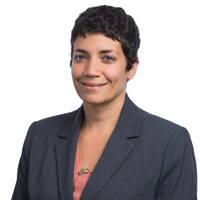“We [need to] make the conscious decision to be on a different trajectory and to never, ever talk about young people as a problem, as a threat, as a vulnerability. The only way that young people would ever fit into any of those categories is if we haven’t done the groundwork to allow them to realize their full potential. And I realize that to some of you in the crowd that sounds like semantics and a whole vocabulary lesson but it’s not. I mean it really has to be about a complete reframing and re-pivoting of how we understand potential and what our responsibility is to unlock that potential for our future—not their future, our future.” --Suzanne Ehlers, President and CEO, Population Action International, Inaugural Co-Lead, FP2020 Rights and Empowerment Working Group
Two events in the past month have begun to shape a new understanding of how best to communicate YouthSave’s findings and lessons to a larger field of global youth development practitioners. Generally, it has been easy to find a way to get those already interested in the economic opportunity, financial inclusion, or asset fields to understand why youth financial inclusion, particularly access to savings, should be considered as a great tool for poverty alleviation. Most in these fields rapidly grasp the range of positive impacts that can come from involving youth in the process of saving. Beyond having a sum of money to protect against emergencies that might otherwise cause economic hardship, the very habit of savings, as we’ve often discussed, can impact youth’s outlook for the future and a host other factors that make for positive youth development.
Nevertheless, the cost of providing youth with a safe and formal place to save can be prohibitive. Absent government incentives, substantial subsidies are often needed to carry a program through to a break-even point, if it ever even reaches that point (this is a particular burden when accounts are not pooled together and youth are saving through commercial banks). And, even once these programs can stay afloat on their own and youth are actively opening accounts and saving, to many who work on global development issues the cost does not seem worthwhile. A frequent objection I hear, for example, is that though there might be, let’s say, an educational impact as a result of getting youth to save, money might be better spent going directly to education programming than attempting to achieve education impacts through savings accounts.
The two events I've attended recently--the Wilson’s Center “World Population Day 2014: Youth Engagement and the Sustainable Development Agenda” and the Urban Institute’s “Global Lessons in Apprenticeship: An International Seminar”--provided some insight into how frame this type of intervention to overcome the typical objections, which often rest on the assumption that financial inclusion projects present an either/or proposition. In other words, both events highlighted how the conversation needs to center around the incorporation of financial inclusion and financial education programming into a broader set or programming aimed at youth empowerment and development; this is the conversation we should actually be having. Both events put this in clear relief, as both articulated connections between economic mobility, youth population numbers, and global development.
Having firmly planted our feet, as Ehlers suggests we do, in the camp of conceptualizing youth as assets and not problems, we must move to discussing the dynamics of what harnessing that potential can look like in the context of developing (and developed) economies. As we see it, it is not that there are too many kids, adolescents, and young people, but rather, there aren’t enough opportunities. And creating these opportunities, as Ehler notes, is our job. In this context, family planning is not about population control, but about giving women and girls a shot at becoming better educated and more financially secure. But what if, even with education, there are no jobs to be had?
The Urban Institute’s Global Lessons in Apprenticeship event pointed to some fruitful solutions. We must marry education and training to meet the needs of changing industries. Education is not a goal in and of itself, the presenters argued, but rather a means through which to become financially secure. But, in many parts of the world, despite education and training (vocational or otherwise) there are simply not enough jobs to support all of the young people who seek employment. In this context, having funds with which to start a business, seek additional education or retraining, or accumulate income-generating assets might be part of the solution. Many of these paths, however, cannot be undertaken without a financial identity, having established credit, or, at minimum, without a small amount of start-up funds. It is here where financial education and inclusion come in. Operating as both a safety net and a spring-board for economic growth and development in the absence of a robust job market or sound economic infrastructure, a small amount of savings and experience with financial institutions and money management can make the difference between thriving (including accessing global markets) and stalling. For many starting out in poverty, stalling can have dire consequences. And, circling again to the impact question, sometimes keeping on a path more likely to lead to a successful outcome can be the key to securing a better future; this is more likely to happen with a holistic approach to global youth development. Holistically, let’s re-pivot and unlock youth’s collective potential.
